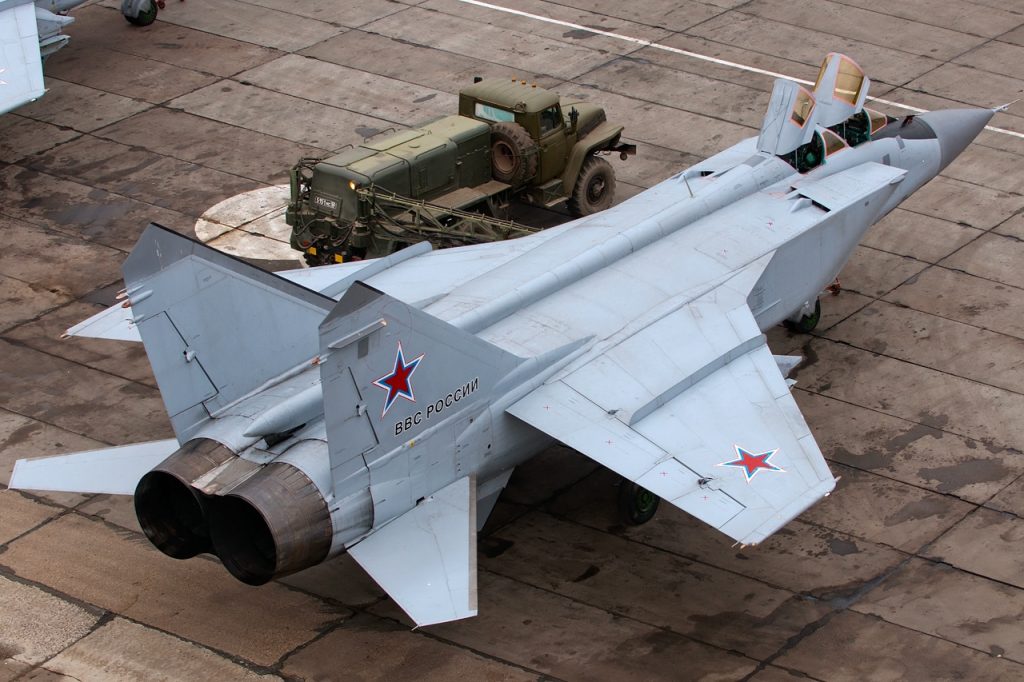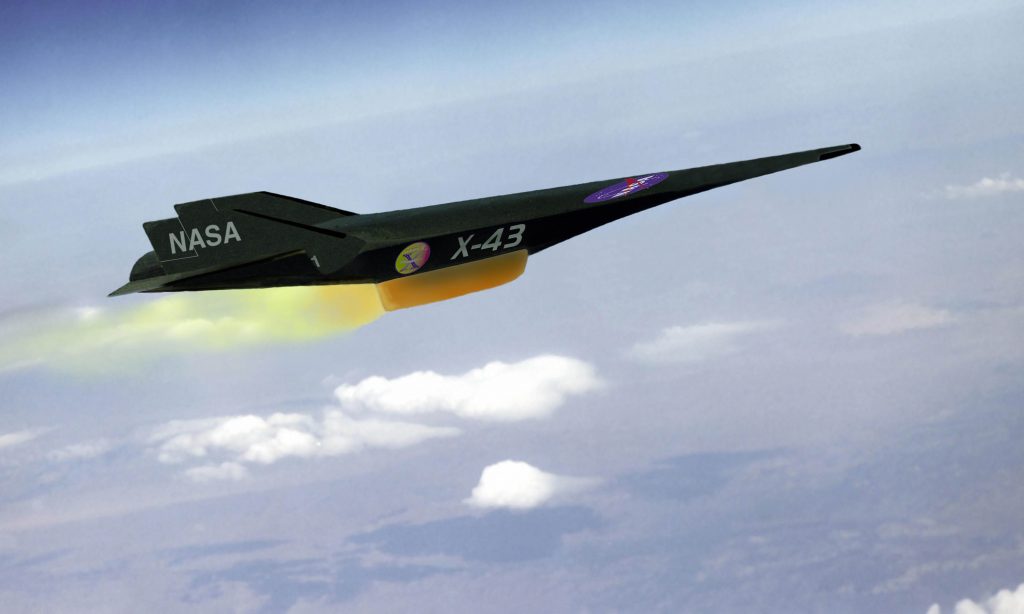With Russian tanks said to be rolling down the streets of the occupied Ukrainian cities of Donetsk and Luhansk, and Russia now in breach of the Minsk accords a full-scale conflict in the region is an increasingly realistic prospect.
Thus far, the majority of Western coverage on the Ukraine crisis has focused on the number of Russian troops on the country’s frontiers, with as many as 190,000 said to have been amassed at its borders, whether ready to embark on an all-out invasion or utilized as a bargaining tool.
However, if such a scenario does come to pass, the battle for air supremacy, and denying the US unhindered recourse to a key strategic asset, its aircraft carriers, is something that has gained little mainstream media attention, would also be vital to its outcome. Both the US and Russia have previously used 3D printing to improve their combat readiness in this area, but it’s the latter who appears to have stolen a march on the West, with additive-upgraded MiG-31 jets.
Carried out by UEC-Perm Motors and UEC-Star, an affiliate of the state-owned Rostec conglomerate, these improvements are said to have dramatically enhanced the engine performance of Russian interceptor aircraft. These planes are also able to launch the Kinzhal hypersonic missiles known as ‘Daggers,’ a capability Russia tested just last week, under its “GROM” nuclear triad exercises.

Extending the life of the MiG-31
Even though the Mikoyan MiG-31 was first flown by the Soviet Air Forces of the USSR as long ago as 1975, it remains one of the fastest combat jets in the world. Yet, with Russia announcing plans to extend the aircraft’s length of service by another third in 2020, taking its operation well into the 2030s, the country’s engineers have found themselves forced into finding new ways of preventing them becoming obsolete.
One way the Russian military has reportedly managed to achieve this, is by turning to the 3D printing capabilities of UEC-Perm Motors and UEC-Star. Specifically, engineers at the firms are said to have 3D printed parts of the MiG’s D-30F6 engine, which enable it to perform at ‘a new qualitative level,’ and with further R&D, it’s believed they could build ‘native engines’ that deliver ‘much better performance.’
While neither company has a big public profile, the former advertises the “after sales service of aircraft engines,” including “service life extension operations,” while the latter is a known part of the United Engine Corporation (UEC), a Rostec affiliate.
Again, the UEC’s website makes little mention of the technologies behind its services, but its close ties with the state-owned firm could be key to better understanding Russia’s MiG-31 program. Just last year, Rostec gained a license from the Russian Ministry of Industry and Trade to serially 3D print aerospace parts, after a successful state-backed test of an additive-manufactured aircraft engine.
Back in 2018, the firm also opened its Additive Technologies Center, allocating $44.5 million towards expanding it into one of the largest facilities of its kind in Russia. Rostec’s complex provides it with access to an array of 3D printing systems, and its subsidiary Ruselectronics has previously revealed it was developing an aerospace EBAM unit, making it a possible facilitator of Russia’s MiG upgrades.
Russia’s renewed aerial firepower
Worryingly for Ukraine and its allies, the enhancements made to Russia’s MiG-31s are said to have brought their top speed up from the 3,400 km/h they were previously capable of, making them an ideal mule for carrying to the altitude where launching a hypersonic weapon is less impeded by the atmosphere at ground level. For example, atmospheric conditions at 20 km exhibit both lower temperatures and less dense air. Operating in the troposphere reduces some of the challenges associated with ground launch, such as air friction causing aerodynamic heating.
In fact, the Russian Air Force is believed to have test-fired its cutting-edge Dagger missile in ‘unspecified locations’ on February 19, 2022, as well as deploying it by submarine in the Black Sea, just south of Ukraine. Officially named the ‘Kinzhal,’ this next-gen weapon was first unveiled in 2018, when its Mach-12 flight capabilities reportedly worried Military Watch to such an extent, that it claimed the missile gave Russia the ability to “strike at Europe, at all ships in the Atlantic and the Pacific.”
Paired with the engine upgrades made to its MiG-31s, the Russian military may now have access to far more potent airstrikes with a much longer range than before. Additionally, the timing and proximity of the country’s Dagger tests could be ominous for those defending Ukrainian positions in the coming weeks, but that being said, Russia’s military is not the only one honing hypersonic technologies.

Bolstering Ukraine’s defenses?
The US Department of Defense (DoD) has also plowed a significant amount of funding into projects focused on the R&D of novel hypersonic flight technologies, with many of these proposing the use of 3D printing to achieve this.
Since a Dayton Development Coalition meeting in 2017, in which a team from the University of Dayton proposed that advanced technologies could be used to build unmanned ‘Hypersonic Technology Vehicles,’ the US Air Force has gone on to test HRL Laboratories’ 3D printable ceramics in their production, while NASA and DARPA have conducted a hypersonic flight test alongside Aerojet Rocketdyne as well.
Late last year, the DoD went on to reiterate its commitment to this area of research, by awarding another $25.5 million in funding to 18 related projects. Not long after, the US Naval Surface Warfare Center Dahlgren Division also announced plans to double down on hypersonic missile development, with the aim of using 3D printing to develop a system that establishes it as the clear leader in the field.
All that being said, there’s no doubt that the US has thrown a considerable amount of cash at improving its hypersonic flight capabilities, but where does this fit into the Ukrainian conflict? Well, the US moved its fighter jets eastwards earlier this month in support of its NATO allies, and these aircraft are said to have been a mixture of F-15 Eagles and F-16s, with the former featuring a 3,008 km/h top speed.
Elsewhere, US Air Force researchers, such as those that presented at last month’s AIAA SciTech Forum, continue to develop ways of countering hypersonic missile threats. Ukraine has also gained military support from the likes of Turkey, Canada, the UK, and more, which could include technologies to this effect, but just like Russia’s MiG program, it’s hard to tell for sure right now what role 3D printing will have to play.
To stay up to date with the latest 3D printing news, don’t forget to subscribe to the 3D Printing Industry newsletter or follow us on Twitter or liking our page on Facebook.
For a deeper-dive into additive manufacturing, you can now subscribe to our Youtube channel, featuring discussion, de-briefs and shots of 3D printing in-action.
Are you looking for a job in the additive manufacturing industry? Visit 3D Printing Jobs for a selection of roles in the industry.
Featured image shows a Russian Air Force Mikoyan-Gurevich MiG-31 fighter jet. Photo via Wikimedia Commons.



